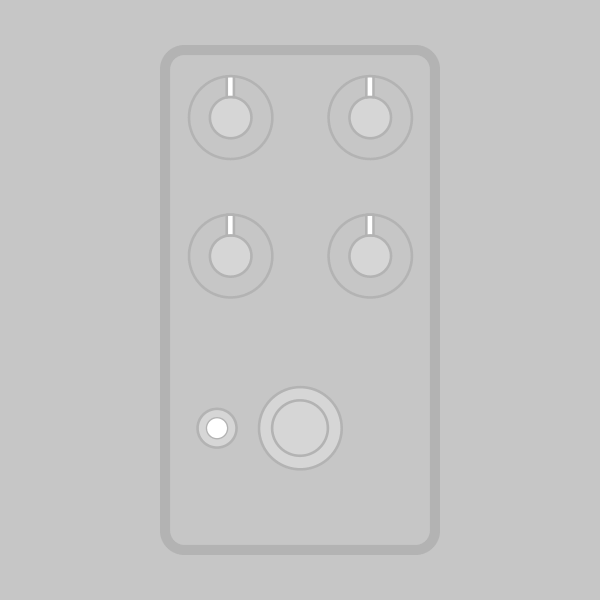
The Xenotron Modulation Machine is an adaptation of Lovetone’s legendary “?” Flange With No Name, probably the most well-known of Lovetone’s lineup, and particularly notable for its complexity both inside and outside. It was the last of the Lovetone effects to be designed, released in early 2000 shortly before the company ramped down production. As a result, it’s also the rarest of their effects.
The “?” was called a flanger, but this is just a simplification for lack of a more accurate term. The basic description is that it has two primary modulation functions: Space (optical tremolo) and Time (BBD-driven flange, chorus, doubling, and pseudo-phasing). These can either be used in stereo with separate outputs for each type of modulation, or summed to mono for a wide array of hybrid tones from the two types of modulation working in tandem.
But the real magic is in the array of knobs and added features. The “Action” (mix) and “Reaction” (regeneration) controls work with in-phase and out-of-phase copies of the signal, meaning they can either add or subtract from the signal in their respective areas. Along with this, the delay path has an optional effects loop for external effects. Together with the CV input and external triggering, it creates the possibility of some unique sounds that are utterly without comparison in the world of guitar effects.
Also interesting is the design philosophy. If you look at the schematic, the only ICs in use are two for the LFO and two for the delay section (a BBD and clock), which is really the bare minimum. The rest is driven by transistors and JFETs, 17 in total—almost as though the designer, Dan Coggins, challenged himself to do it the hard way without the convenience of op-amps. (Whatever the case, Dan said this was the design that pushed him over the edge and caused him to quit Lovetone shortly afterward.)
The Xenotron is a faithful recreation of the Flange With No Name, with all the features of the original in a much smaller package. We’ve done the hard work to make a clean and efficient layout that is as straightforward to build as it possibly could be, and written an extensive 30-page build document—but even still, it’s a challenging project and not for the faint of heart.
Due to the complexity of operation, we’ve taken the step of recreating the original Lovetone user manual as a separate document, and the controls are only described briefly in this main build document. Keep the manual handy when using it, because if you don’t know how it works then there’s a good chance it will sound broken the first time you plug it in!
We have also created an Interactive BOM tool for this project to help with the build process. Components are grouped by value, and you can click any component to see which other parts have the same value and where they’re located. (Chrome-based browsers only)
Special thanks to Ian (LaceSensor / Gigahearts FX), the DIY community’s resident Lovetone expert, for help verifying the Xenotron prototype against an original Flange With No Name for accuracy.